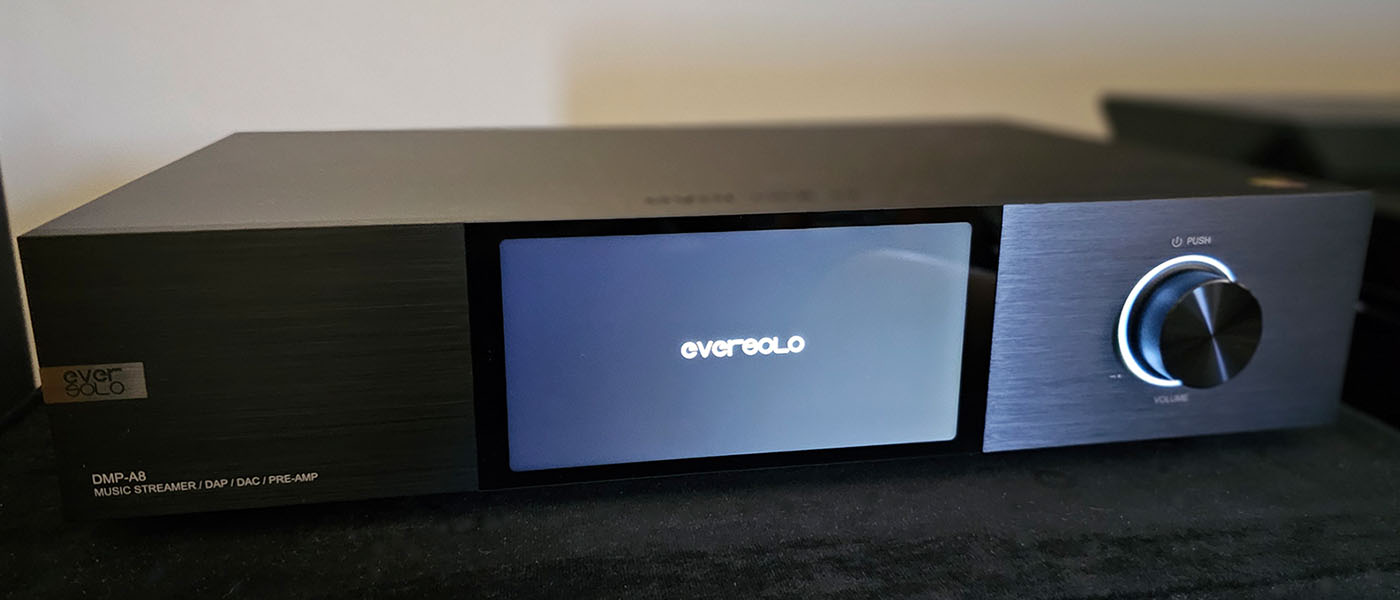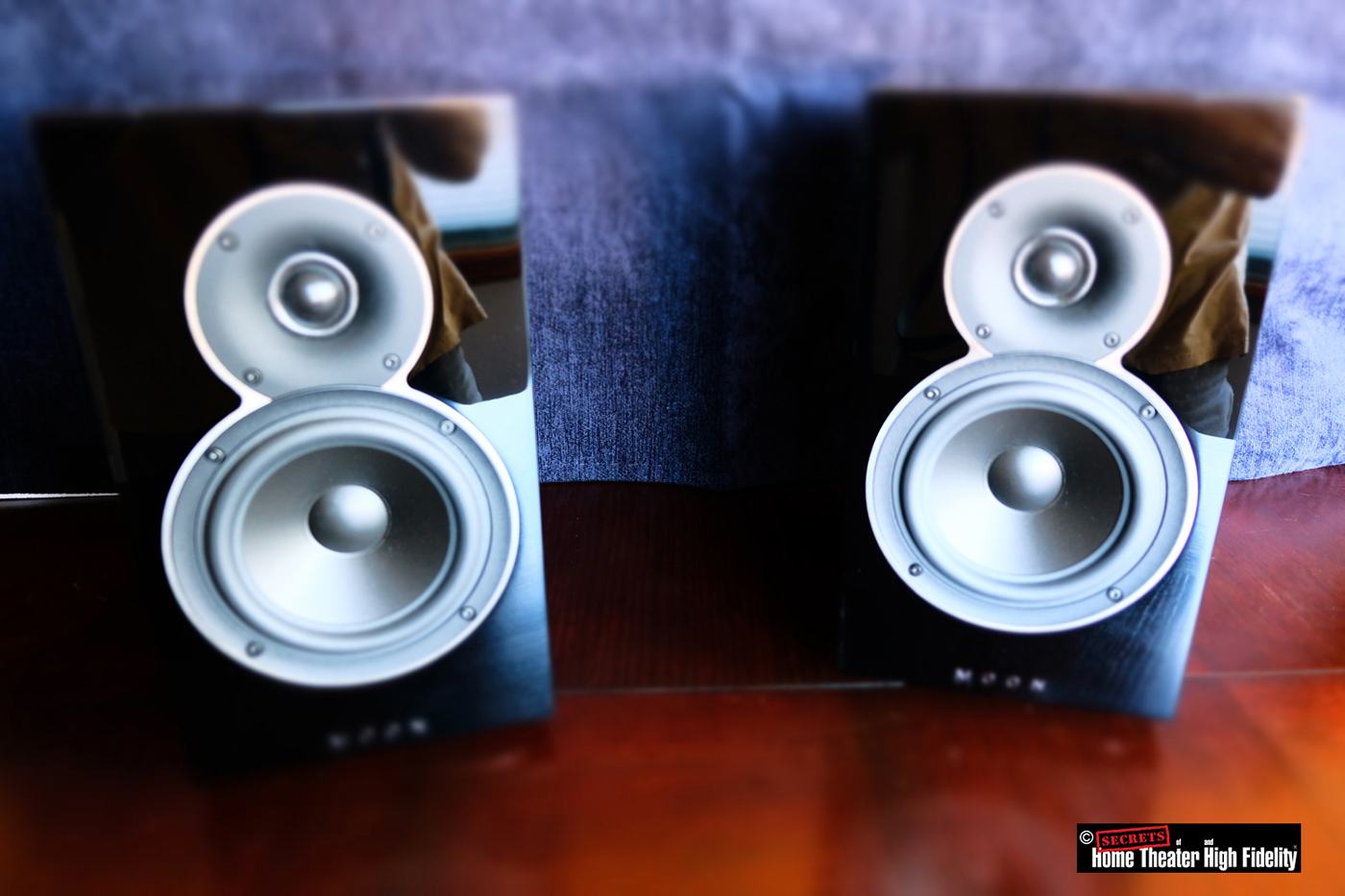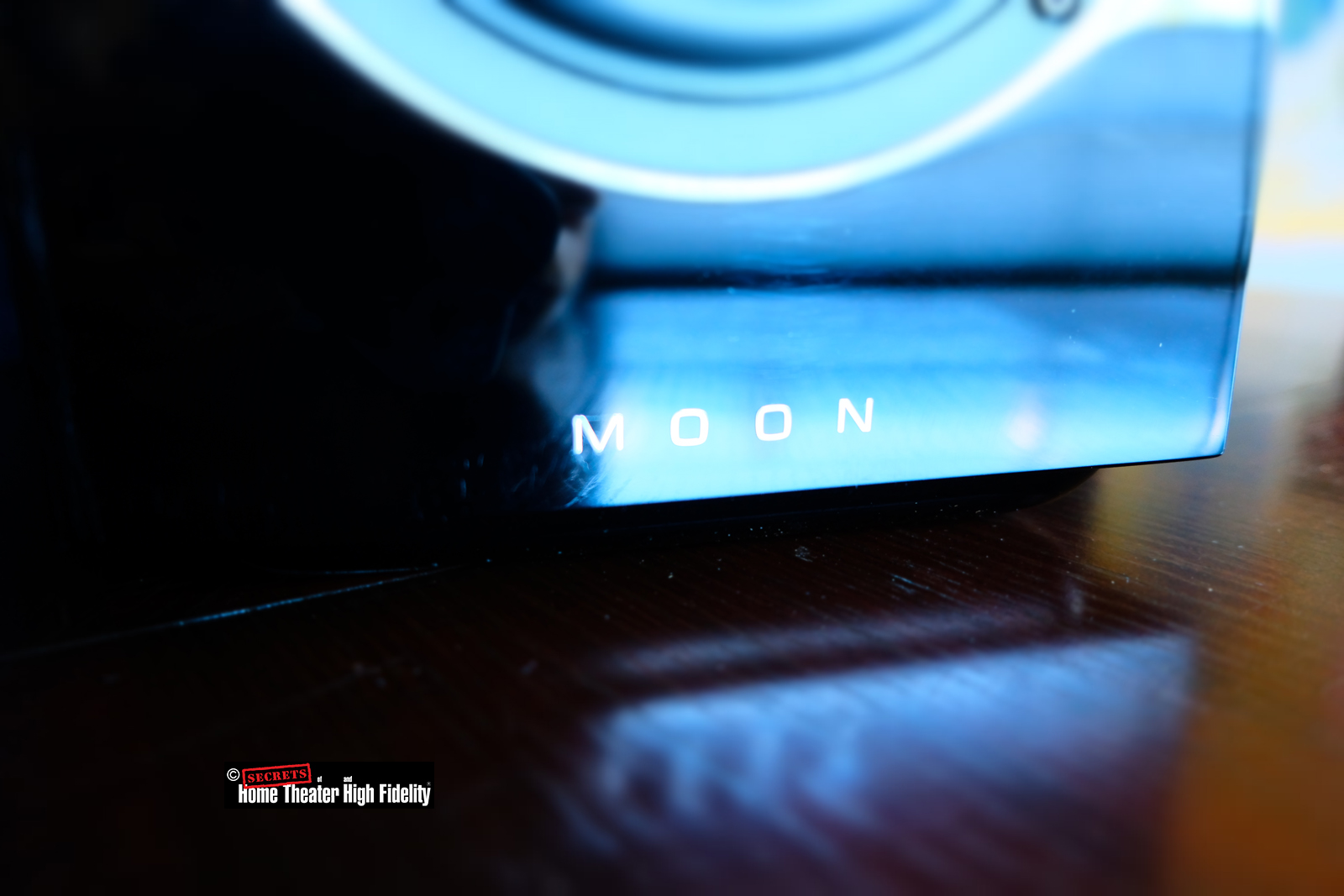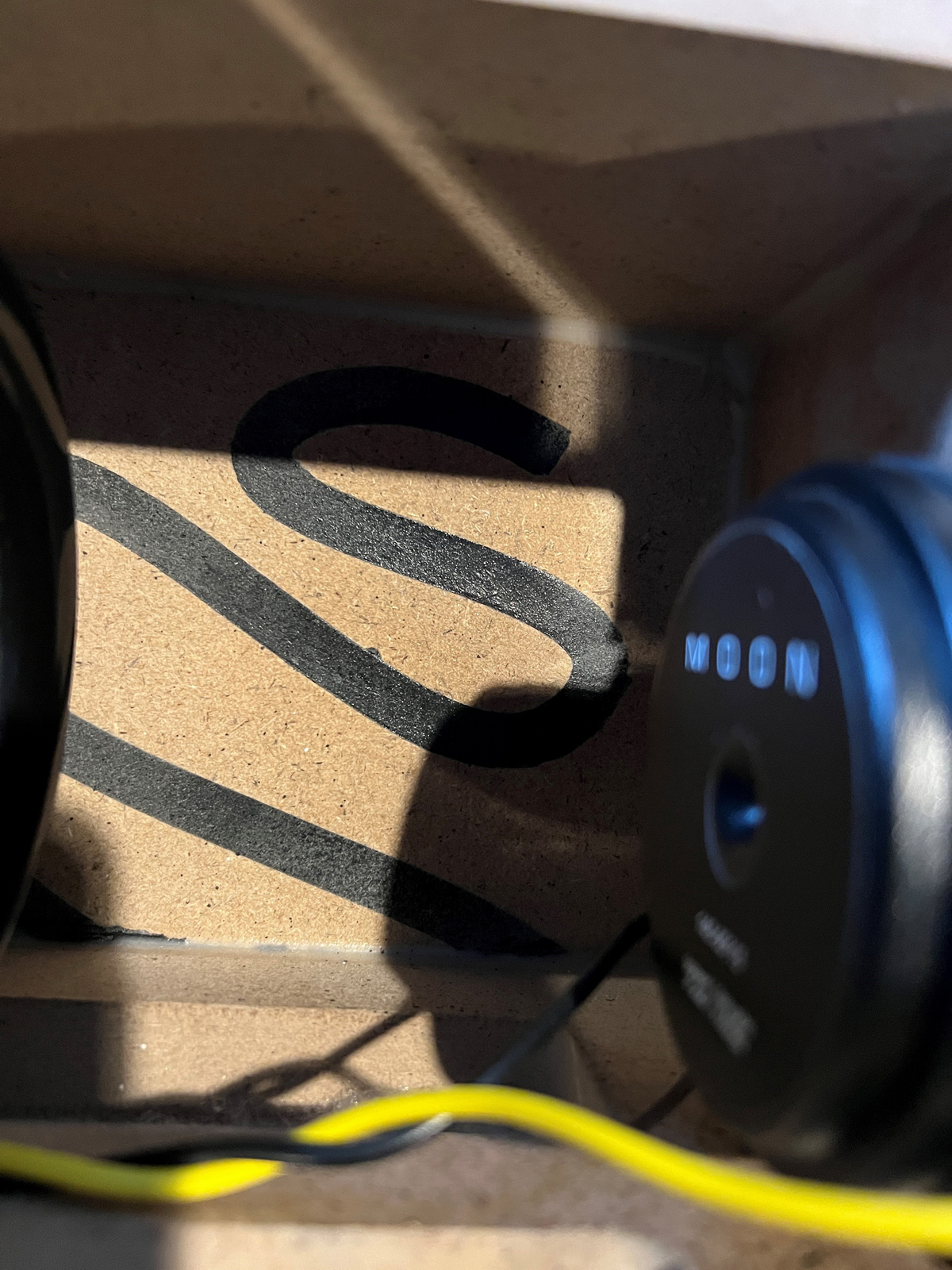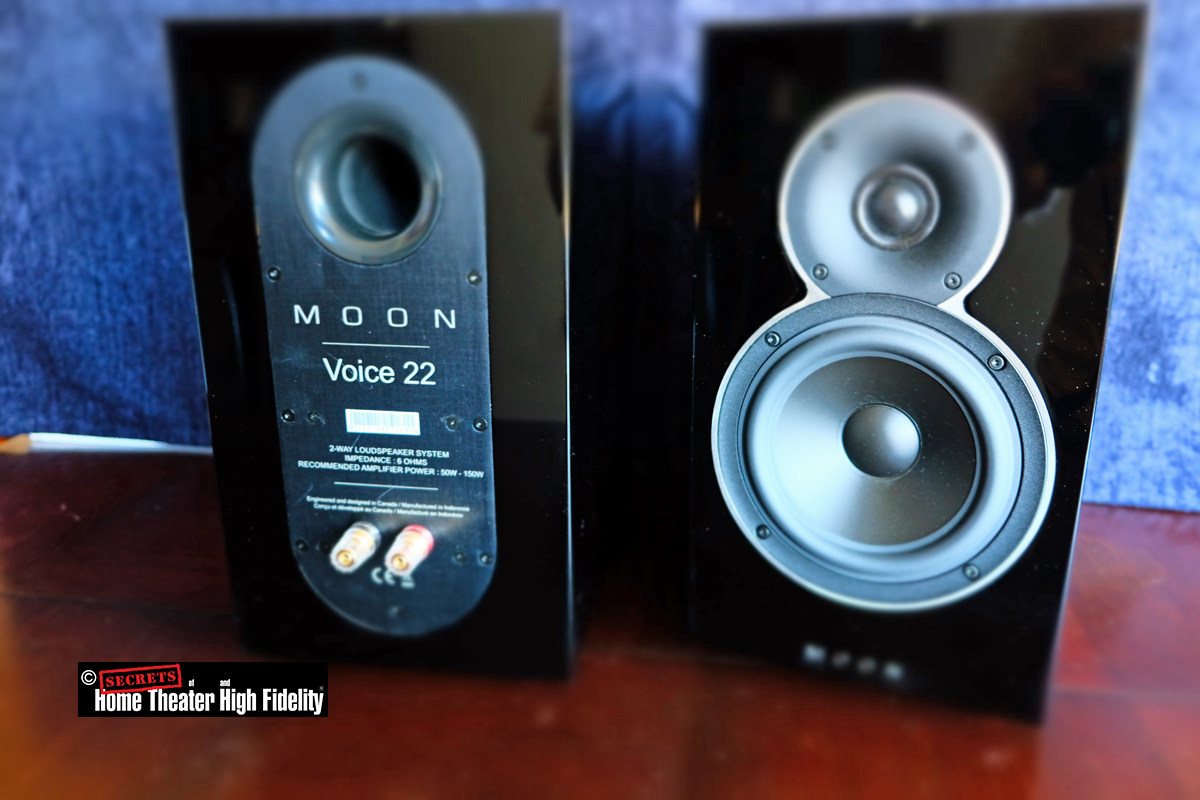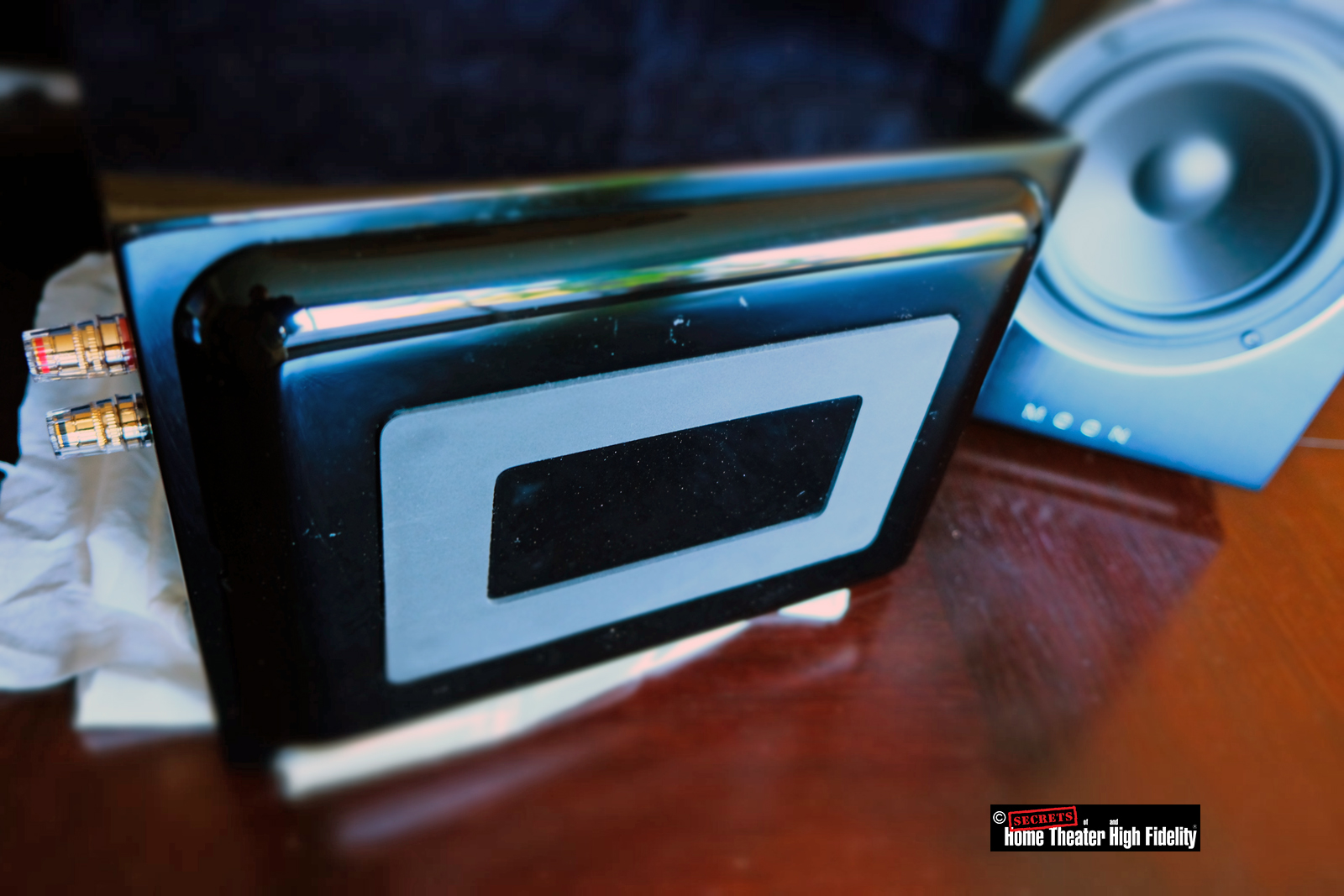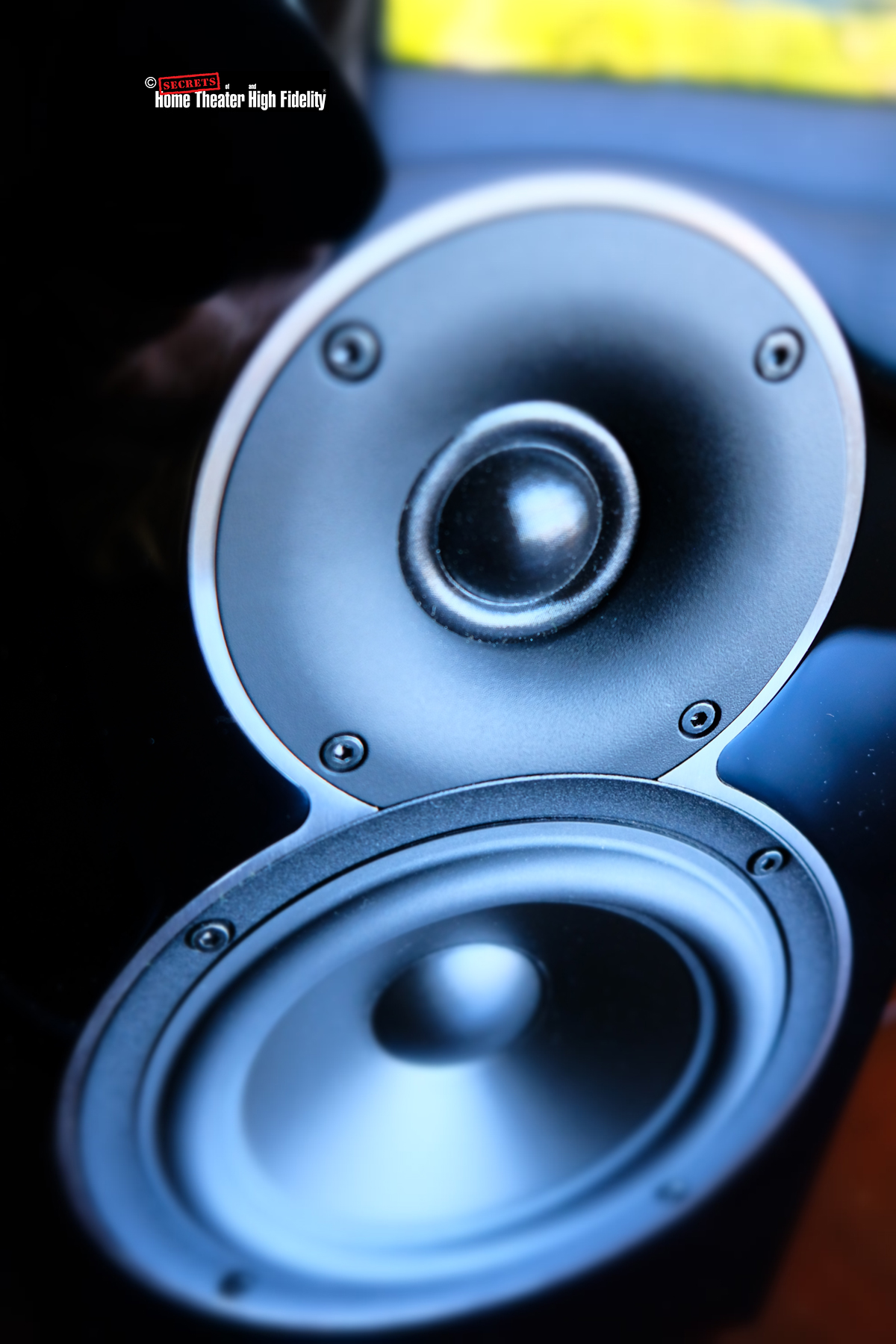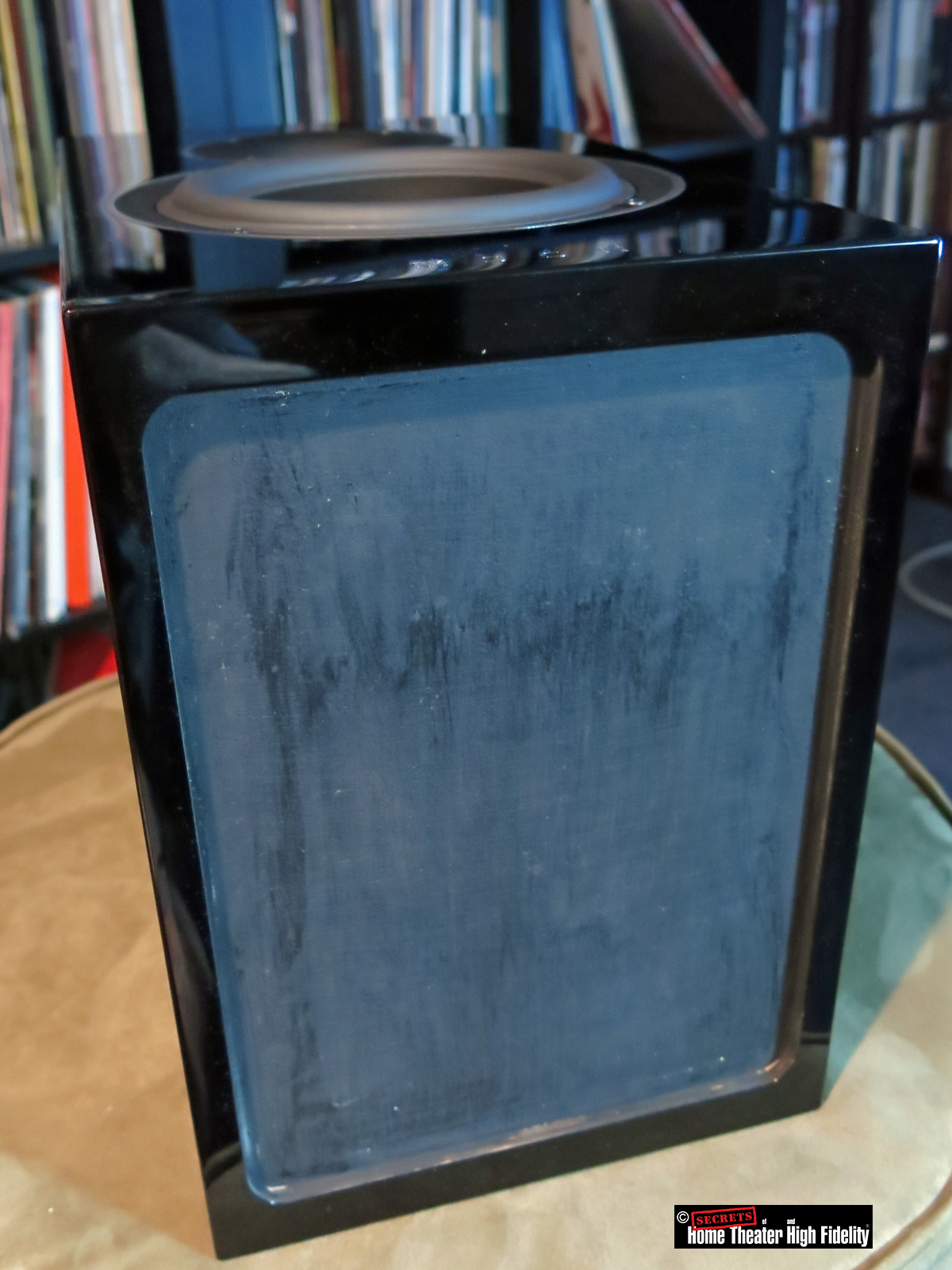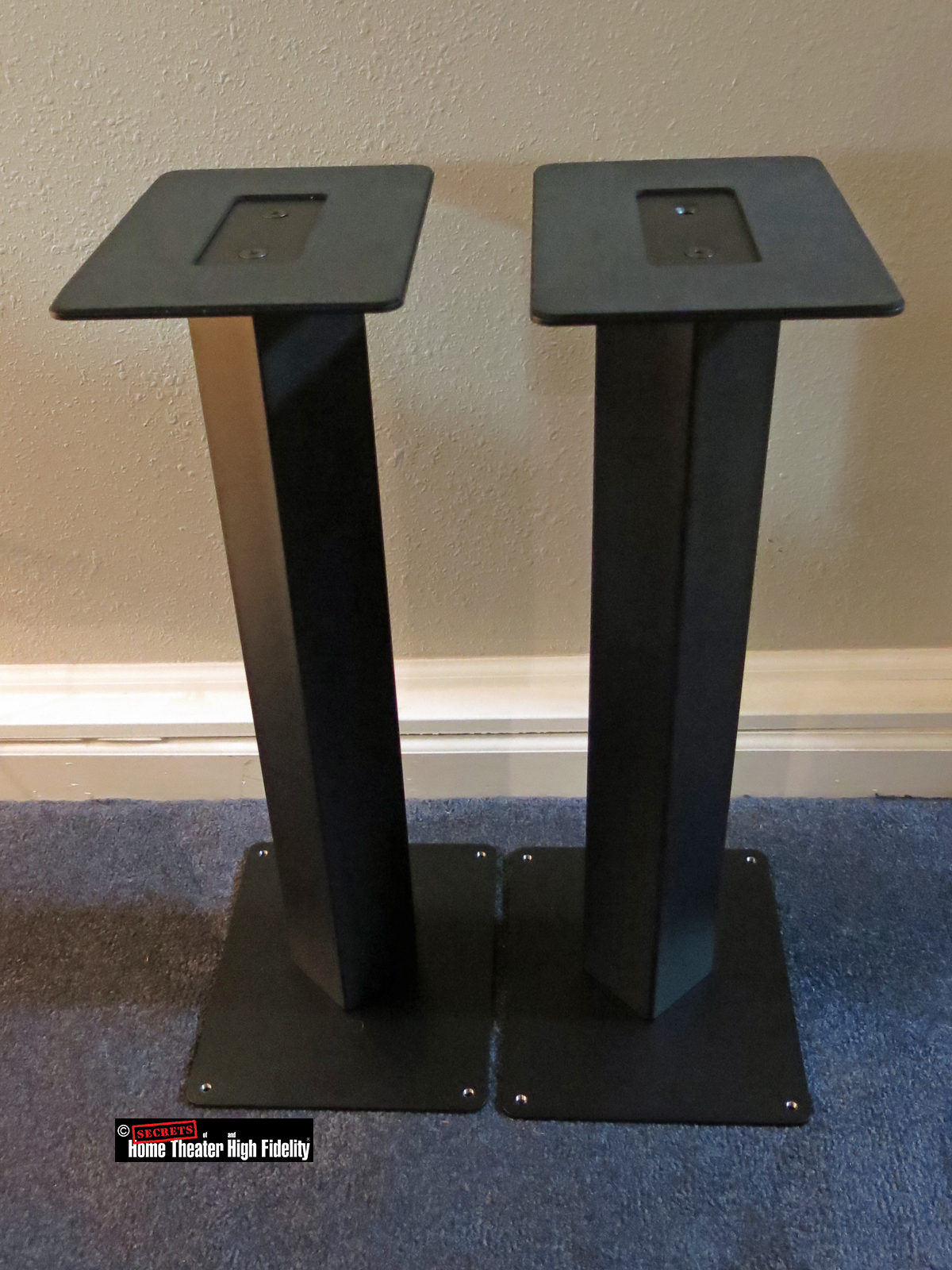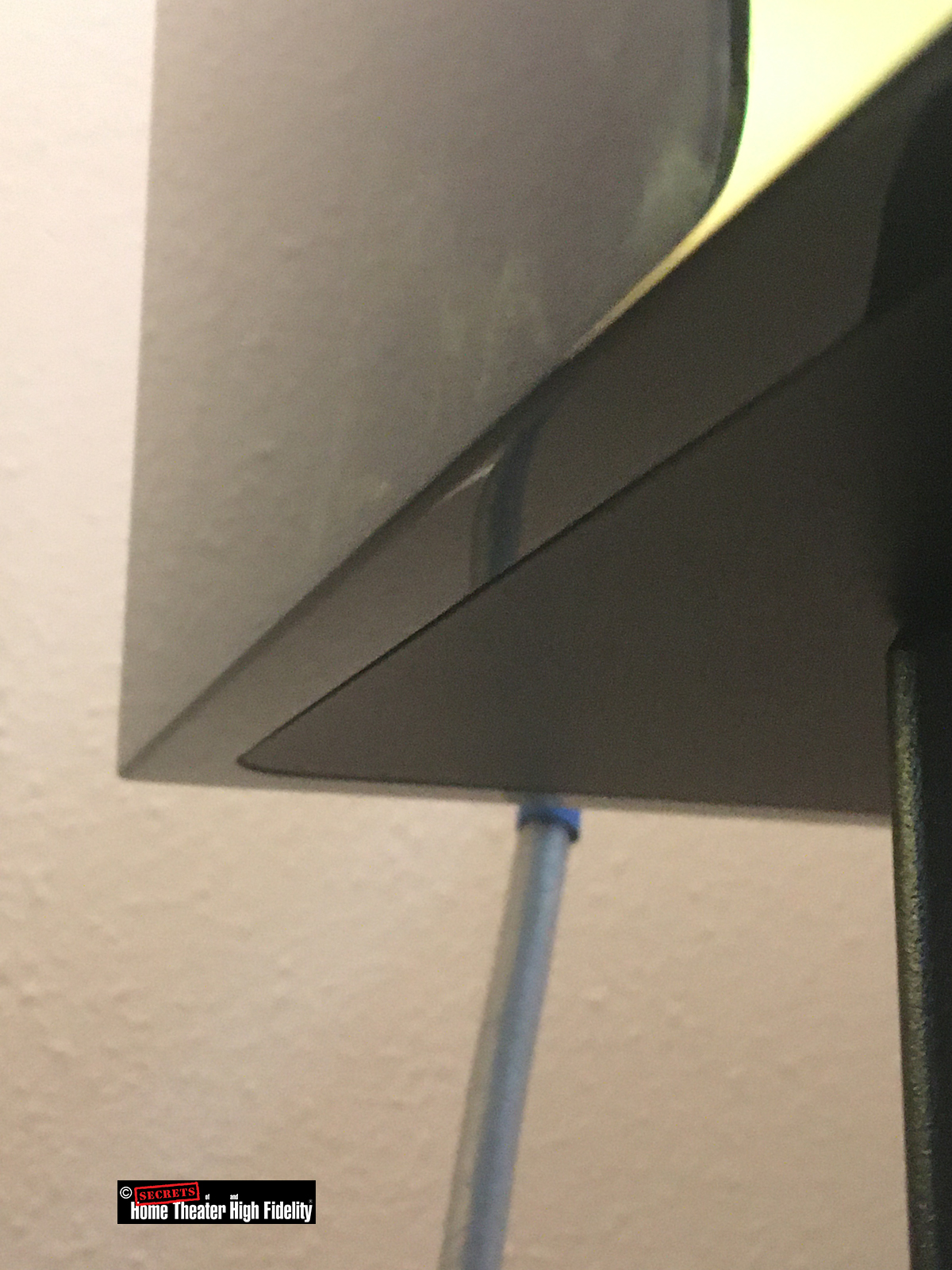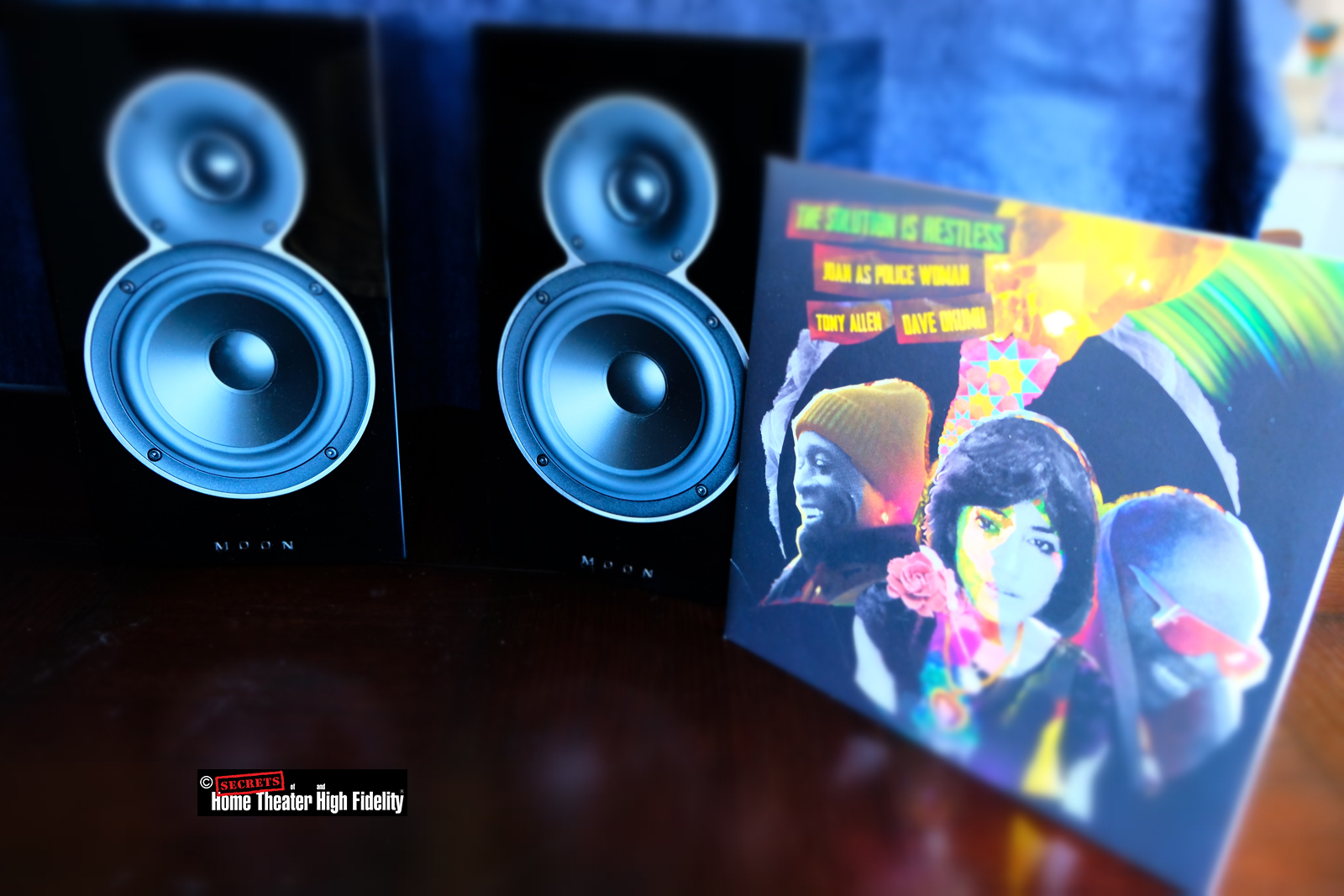The Voice 22 were created to be a companion for the amps, integrated amps, and all-in-one players around the ‘2’ range of the Moon electronics line. The speaker’s cabinets are finished in super-glossy piano black or piano white. They house a 6” woofer with an extra-long-throw motor and a 1” fabric dome tweeter that features an oversized surround of its own – all adding up to extra power handling ability. The tweeter is mounted in a waveguide that along with a unique crossover point, aid in a wide dispersion pattern. Enclosure vibrations received some special attention with 3⁄4” HDF and a patent-pending technology (Curved Groove Damping) on the inside. The overall effect is natural and engaging music that is easy to listen to.
Moon Voice 22 Bookshelf Loudspeaker
- Smart little speaker that way overachieves.
- Innovative, sturdy stands available separately.
- No-fuss dispersion characteristics allow for easy placement.
- Included hover base to prevent stray vibrations from getting to source equipment.
- Lusterous piano-black finish.
- Seductive midrange draws you into the music.
I waited a while to inquire about reviewing the Voice 22 from Simaudio. This is the first loudspeaker from the storied electronics company, and I assumed there would be some larger designs to follow. Me and my assumptions. This is it, there are no plans for bigger, more expensive, less expensive, or what have you, speakers from Simaudio. This is the pinnacle? There can be none better? Well, no, but it was designed to fit a purpose, a purpose in the marketplace. The ‘22’ part of the name is meant to match the ‘2’ (ish) range of the Moon line. Such as the 240i, 250i, ACE, 340i all the way up to the 390 Network Player with a 330 Amp. Note that the ‘I’ in each of those cases is for ‘integrated’ and the ACE is an all-in-one music player. The idea with the Voice 22 is that folks who are buying integrated amps in that range can be assured that the Voice 22 is a good speaker for those products. No muss no fuss. Of course, the Voice 22 will work fine with other electronics brands and of course, one could choose any speaker to work with your Moon electronics but for those who don’t obsessively read (or write) online reviews… Let’s make it easy for them.
Tweeter:
29mm soft dome with waveguide
Woofer:
155mm mineral-filled polypropylene cone
Sensitivity:
89dB/2.83V/1m
Nominal Impedance:
6Ω
Recommended Power:
50W – 150W
Frequency Response (±3dB):
55Hz – 24kHz
Frequency Range (-6dB):
45Hz – 30kHz
Crossover Frequency:
1.5kHz
Dimensions (W x H x D):
20cm x 35cm x 29cm
Weight:
10.5kg each
Accessories:
Hover Base bottoms are pre-installed / Stand 22 sold separately ($400)
Warranty:
10 years, parts and labor
MSRP:
$3,200.00
Website:
Company:
SECRETS Tags:
Moon by Simaudio, Moon, Simaudio, Voice 22, speakers
Secrets Sponsor
Starting with the all-important enclosures, where the norm is MDF, HDF (High-Density Fiberboard) was chosen instead. I applaud this move – I find that the standard MDF enclosures out there have a note of dullness to match the dullness you will hear if you knock on MDF. But let’s not stop there. There is internal bracing, placed off-center to help avoid standing waves, and most intriguing, a patent-pending lining system of grooves etched into the speaker walls and then filled with dense rubberized material. Curved Groove Dampening, CGD. The groove design is based on some mathematical analysis aimed at eliminating standing waves. Okay, now let’s stop here for a second. These speakers were (and are) envisioned as an easy choice for newbie stereo buyers. Would anyone have given it a second thought if Simaudio had simply thrown some polyester batting in a box and called it good? Instead, we’ve got a patent-pending innovation on their first-ever loudspeaker design. Applause.
The woofer is ported on the rear of the speaker, so it is recommended that they be placed 12-18” from the back wall.
Internal wiring is OFC (oxygen-free copper), low resistance, 16-gauge multi-strand.
The six-inch woofer and one-inch tweeter are manufactured by SB Acoustics with customizations as specified by Moon. The woofer is an extra-long throw design, which means there is the possibility of moving more air with each excursion. On a theoretical basis that could happen at any frequency but practically speaking, it comes into play at the low end. So, we hope to hear better and lower bass performance than is typical for a speaker of this size. The specs say the speaker is good to 45 Hz. The driver material is a mineral-injected polymer with a neoprene surround. These are materials that are meant to last. The textile-dome tweeter has an extra-large surround which extends its frequency range on the low end and is mounted in a waveguide to carefully control dispersion. Both of those tweeter features eased the crossover design, allowing a low crossover point, of 1.5 kHz. Typical would be 2-2.5kHz. This means this tweeter is receiving a lot more energy from the amp than your average tweeter but the large surround, allowing for large excursions, accommodates that. The crossover uses both air and iron core inductors and the all-important polypropylene capacitors.
Since the tweeter is doing more work, the woofer can do less. This means less beaming. There’s the frequency range that a driver can produce and then there’s the usable range which is somewhat less because of the dispersion pattern. The higher the frequency, the less evenly distributed (spatially) it will be. This is just the physics of cone drivers. The waveguide of the tweeter is designed to match the dispersion pattern of the woofer at the crossover point so you won’t have to sit solo in the sweet spot. The room is your sweet spot.
All that makes for a complete speaker but why stop there? There was some more innovation, in an area near and dear to my heart – vibrations from the speakers making their way to the source components. This is critical if your source component is a turntable, but it’s a factor for all of your components. Regarding turntables – I’ve managed to spread my vinyl bug to a couple of people lately, infecting them with a lifelong affliction. I feel good about it. However, despite all my preaching, teaching, lecturing, and explaining, both of these fine folks have speakers on the same surface or in the same cabinet as the turntable. Arrrrrrrgggggghhhhhh! Noooooooooo! Breathe into a paper bag. Count to ten… it’s not working… I need to go to my happy place… I’m a singer in an indie rock band… that’s it: As a child, I wowed everyone in the school choir belting out “I Will Survive”. I won a scholarship to Juilliard. I discovered a talent for songwriting and formed a band with some fellow students. Keep breathing. We named our band Love Drug, a nod to a mutual appreciation of Roxy Music. Amazingly, a record company executive heard us playing at a coffee shop near the school! We got a record contract! We quit school and went on tour opening for PJ Harvey! It’s the first show, I’m nervous but ready. Okay, here we go, clear my throat, ahem. Wait, why are those roadies sneaking up behind me…? They’re grabbing my shoulders and shaking me! Hard! Hey! I’m singing here!!
Sigh, so much for my happy place.
Simaudio has my back. The Voice 22’s come standard with their own vibration isolation platforms attached. Named “The Hover Base” because it makes the speakers appear to float above whatever surface they are on. The Hover Base is heavily padded with Poron, a closed-cell foam material known for its excellent dampening properties. Simaudio has a practice of using Poron in certain source components. (Not too long ago Poron was available on Amazon but that is not the case as of this writing. I hope it shows up again. While it was there, I bought a few pieces that are absorbing stray vibrations in various places throughout my system.)
So, the Hover Bases are designed to keep the roadies off the stage while the performance is going on. That’s pretty good but after the rude treatment I received during my happy-place fantasy, I want them further away, maybe they can wait on the bus. Let’s put the speakers on some stands.
If you happen to have some speaker stands already, the Hover Bases will still serve you well, keeping the floating appearance and protecting the bottom of the speaker from the otherwise inevitable scratches. If you get the Voice 22 dedicated stands from Simaudio, the Stand 22 (naturally), you can remove the Hover Bases and fit the speakers neatly onto the top of the stand. These are heavy, sturdy stands with basic but decent styling, manufactured for Simaudio by Target (not the store, Target Audio Products). The Hover Base is easily removed, and the attachment is magnetic, so no tools are required.
Okay, that’s a lot of tech talk for a little two-way, but how does it sound?
I started with the Voice 22’s in my downstairs system – amplification from two of the five channels of a Parasound Halo A51, a Simaudio headphone amp – the Moon 430HA- ably serving as the preamp for a Denon DP-3000NE turntable (with Hana SH cartridge) connected to my QHW The Vinyl with Nordost Blue Heaven. Other cables are more of the Blue Heaven and Hiemdahl 2 and a variety of Shunyata power cords from previous generations. For any speaker, the room they are situated in will make a difference. Small two ways such as these will benefit from having some walls and ceilings not too far away and not a bunch of openings to dining rooms etc. In this case, there is only one opening – the doorway at the far corner. The room (20’ x 14’ x 7’) is fully carpeted and has loads of records in it along with the TV and futon couch. The Voice 22’s were situated along a narrow wall, about three feet from the side walls. As prescribed by Costa Koulisakis (Director of MOON Training), about 16” from the back wall (but with a big TV between them in my case) and toed in just a little. The excellent dispersion characteristics mean that toe-in should not be required but I found that the standard: aiming the speakers for a convergence point behind my head, was preferable but indeed, didn’t make a huge difference. I think I like the aggressive look of some toe-in so maybe my listening perception is affected by that. With this arrangement, there was a bit of sound stage forming in front of my TV. I sat 8 feet away and the Voice 22’s were 7 feet apart. I played around a bit, having them farther from both the back and side walls, and found that keeping them closer to the back wall helped to focus the bass. I didn’t try any closer than 16” as I was trying to keep the front of the speakers well in front of the big TV.
The speakers come with grill cloths of course, and in the same vein as toe-in, I, and everyone else probably, like to see the drivers so I didn’t try them.
I started with the speakers placed atop some very old Aperion stands which, along with the Hover Bases, put the tweeters a bit too high – probably three inches above my ears.
What I didn’t do was wait for the break-in period – when your main listening source is a turntable, it ain’t easy to get to 100 hours. I liked the speakers straight away but indeed there seemed to be disconnects between the woofer and tweeter. At about the 50-hour mark that melted away. At about the 100-hour mark the Voice 22’s really started to sing. So, if you are auditioning these at a local retailer, ask thrice if they’ve been broken in.
The Voice 22’s really do differ from standard designs in a lot of ways (crossover point, patent-pending enclosure damping methods, oversized tweeter surround), and that comes through in the sound. What I heard was a liquid-smooth midrange that I believe is the product of the two drivers working together. I didn’t hear any of the plastic grain that is common with polypropylene drivers. Grain is hard to describe in other terms except to say it is not smooth, not soft. A bit of grain is good to reproduce chunky bass guitar, and guitar in general, but it wears on you. After a while, polypropylene drivers start to sound like plastic, because that’s what polypropylene is, and stuff sounds like what it’s made of by and large. The mineral-filled polypropylene drivers in the Voice 22 do not sound like plastic. They are quite neutral timbre-wise.
As is the case with a lot of modern two-way speakers these days, the bass goes way lower than you think it would. This is largely due to the long-throw designs that weren’t practical a couple of decades ago, but I would also attribute that to unique enclosure damping being used here. For one thing, it works. (My) Fingers placed on the sides or top of the Voice 22’s while playing some cacophonic rock (Spiritualized, for instance) told me that the vibrations coming from the enclosure were not only well attenuated; they were not just the direct transmission of the music. If you try this method on a completely undamped, thin-walled enclosure you’ll discover that the sidewalls are re-transmitting most if not all of the frequencies the woofers or midranges are producing. This isn’t always terrible but mostly it is. Some speaker manufacturers aim to make use of the cabinet contribution in fact but it’s a dicey business. It’s better suited to simple, instrumental acoustic music. Rock-n-roll or orchestral presentations can become muddied. In the case of the Voice 22, the cabinets do not seem to be contributing to or detracting from the music. No mud. For another thing, the damping on the sidewalls is just that, there is not a big piece of anything stuck into the middle of the cabinet. As I peruse speaker building sites on the interweb it seems like the volume of the speaker cabinet is carefully selected to provide the proper loading for the driver(s) and then discarded by throwing copious sound absorption material in the box. Besides bugging the heck out of me, this practice ends up loading the woofer differently and less optimally than was calculated for, reducing the potential bass extension. Listening to the Voice 22, it seems that the woofer is unencumbered, free to woof out.
On the high end, the fabric-dome tweeters are as smooth as expected though the highs do roll off a bit below the highest possible highs. The result is very musical in that cymbals, drum snaps, and high-frequency synth effects are placed neatly in the background. This always sounds good, proper even, but with my higher-end speakers or with just about any metal tweeter, those same sounds can be in the foreground and emphasized. Which is correct? Maybe those who were there in the studio on that day could tell us. At this point, it’s up to your ears to decide.
I mentioned Spiritualized:
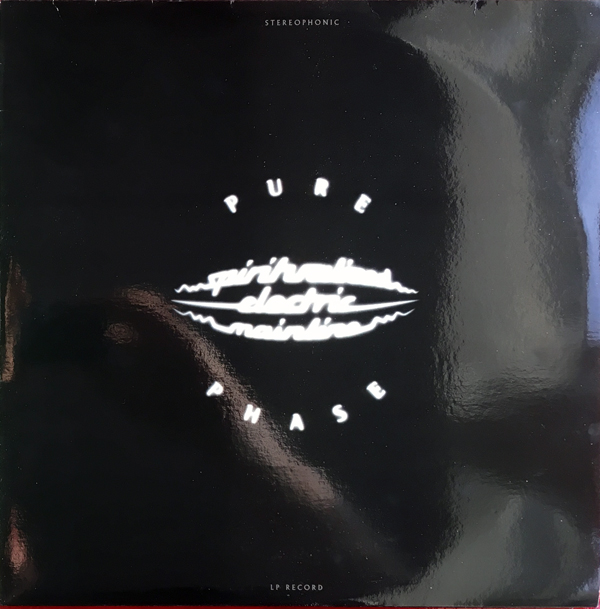
Spiritualized, “Pure Phase”
But did I mention the cacophony? Yes, one can’t really talk about Spiritualized without mentioning that. In an interview with J. Spaceman about his earlier project, Spaceman 3, Mr. Spaceman said that they enjoyed driving people away from their live concerts with walls of random noise. In Spiritualized the wall is cleaned up and painted. I marvel at the interweaved threads of guitars, bass, drums, and horns in the noise-fests that come and go on Spiritualized Records. I think the better the system, the more enjoyment these will bring. The Voice 22’s served up this interwoven musical fabric quite nicely. Even though the instruments aren’t separated as much as they can be, I had no trouble hearing what the band was up to (it’s not random noise) and loved the hell out of it. At the time of release of Pure Phase, J. Spaceman had renamed the band ‘Spiritualized Electric Mainline’ but later re-settled to Spiritualized. To add to the confusion, there is a song on side four titled “Electric Mainline”. This is one of Spiritualized many tunes structured as a canon – with a repeating melody altered slightly over the seven-minute and 40-second track. With the Voice 22’s driven by the big Parasound, I was properly mesmerized, and that time flew by.
I started to redefine my happy place from an unlikely music-career fantasy to something more local when the Stand 22 arrived. These stands are a bit shorter than the old Aperion stands that I was using. The Stand 22’s put the tweeters more in line with my ears – about 35” off the floor. But how cool is the dedicated mount!? Very cool. The Hover Bases are a snap to remove, no tools involved, they pull right off. Then, the Voice 22’s mate very securely to the Stand 22’s. I find myself wishing that all speaker stands worked this way. The speaker will not be wobbling or falling off. Visually the proportion of stand-to-speakers has a certain rightness. I don’t know if it shows up in the photos. The spikes that are included with the Stand 22 did not seem long enough to reach through the thick carpet and pad that I have here, but I didn’t really think about it after I had them set up. The Stand 22’s are pleasantly heavy, but it would be nice to put some sand in the hollow legs. I get the impression that it would be leaking out the bottom. For sure it would be kind of hard to get it in there; the top is mostly closed off. A determined audiophile could do it. As it is though, it’s clear that the tight coupling between the speaker and stand, with Poron on both surfaces is providing additional damping as well as security. From my listening notes: With stands – way tighter and deeper bass, allowed the highs to float above it all more, more distinct separation of sounds.
My happy place received its complete, new definition when I put on this Happy Rhodes compendium from the amazing Numero Group.

Happy Rhodes, “Warpaint”
Inspired by Kate Bush and Queen, and serving as a precursor to Joanna Newsom, Ms. Rhodes showcased her four-octave voice on eleven albums released from 1986 till 2007 and if it weren’t for the Numero Group, I never would have heard of her. The music on this Happy compilation is from her first four records and is mostly Stranger Things-type synth. The songs are honest even if the lyrics are often on-the-nose. What matters though is the singing! Oh my. Yes. I started to think that the Voice 22’s were so named because of the way they conveyed this voice. The sweet midrange of the Voice 22’s is a great match to Happy – whose voice remains beautiful and powerful in each and every octave. The Voice 22’s easily kept the throaty synth sounds separate with enough of the unique timbre of those early-days instruments to draw my ears in over and over.
I wanted to listen to a record that I wasn’t familiar with to get my impressions without the filter of my previous experiences. As it happens there is a new one from Nick Cave.

Nick Cave and the Bad Seeds, “Wild God”
The experiment worked famously – if this was all that would ever be regarding my experience of this album, listening through the Voice 22’s, I would revel in its beauty and not look back. This is a challenging record for any system with multiple background singers and strings and horns and guitar, bass and drums, and Mr. Cave over the top of all that. I can’t say the Voice 22’s pulled all of that apart and served each up in its own space, but the overall presentation was so good I just listened.
Moving that same record into my upstairs system (Moon 810LP phono stage to Moon P8 to Moon W-6 monoblocks, connected by Kimber 8TC to Daedalus speakers – interconnects are balanced Nordost Tyr or Shunyata Omegas, power is from a Shunyata Denali 6000/S v2 and Typhon T2 pairing and Shunyata power cables of different generations, the turntable is a Nottingham Space Deck with Dynavector XX2 mk2) I was able to hear these different layers with more space between them. Still, this record challenged even my better system.
But what if I put the Voice 22s in that system? One nice thing about small speakers, they’re easy to move. Only one problem to solve, there was no carpet upstairs, so I kept the spikes on but rested them in the same Herbie Sliders that the Daedalus rest on. There is a soft-felt footer option included with the Stand 22s if that is your preference.
Playing the new record from our man Nick once again, the 400W per-side, vintage, W-6s did push (and pull) the Voice 22’s to separate all those layers more than was happening with the Parasound but not nearly to the same degree as the (estimated) 3x more expensive Daedalus speakers were doing. The bass and treble were extended only a little from what I was hearing downstairs.
Even though it is of the same dimensions as the downstairs TV room (if you ignore the opening to the dining room), my upstairs room is not a great fit for small speakers. The speakers are along the long wall – straddling a fireplace that is heavily treated with mostly homemade diffusers and absorbers. The extra distance to the sidewalls though means a lot of the bass reinforcement is lost. For the most part, the Voice 22’s held up just fine though. I noticed the difference, but I wasn’t thinking about it.
When I played the new Joan as Police Woman record, Lemons, Limes and Orchids:

Joan As Police Woman, “Lemons, Limes and Orchids”
– it was as expected anytime Joan Wasser was at the mic, the vocals were stunning. I also played her previous record; the outstanding The Solution is Restless. Pictured here to give an idea of the size of the Voice 22s:
This record is a piece of art. As can be seen from the cover, the late Tony Allen joined the cause. These songs are pristine recordings with the utmost musicianship, but there is this bit of banter that has baffled me until recently. The banter melts my heart with the warm feelings on display as Joan jokes around with the group and then comes to: “Let’s do one more”, and then the agreement from the band. Okay, sure, but that makes it seem like these tracks are improvised, not planned. Well, yes. It turns out the band was jamming, riffing, and just playing. This happened right before COVID. Ms. Wasser used her lock-down time to disassemble and then reassemble the parts into these incredible tracks. One thing that is vital to getting the most out of this record is that in-the-room feeling and with their sensuous mids, the Voice 22’s brought me there once again.
Just one more note on the listening: I mentioned the big TV between the speakers in my downstairs system. Astute readers will infer that I was using the Voice 22’s while watching. I never struggled to understand a thing and was routinely impressed with the deep sounds (explosions, crashes, all the stuff that we call entertainment) the Voice 22’s would produce. Then there was the time that I stumbled upon the Stop Making Sense concert movie by Jonathan Demme. Here the front end was the DAC in the 430HA, taking the digital stream from my TV. Wow. The liquid center of the Voice 22s was flowing this way and that, following David Byrne around the stage. The bass of Tina Weymouth is so prominent in the Talking Head’s sound and it was really grabbing me. I was not planning on watching this – I’d seen it before, back in the day, don’tcha know. But I couldn’t switch it off.
Secrets Sponsor
The Moon Voice 22 loudspeakers from Simaudio have multiple unique and innovative design features that translate to an intriguing sound that draws you in.
- Extremely well-controlled cabinet vibrations mean there is more of the music.
- Smooth midrange from a unique design.
- An overachiever.
- More resolution on the high end.
- Provision to fill the stands with sand.
I love all of the innovations that went into the well-worn path of two-way speaker design with the Voice 22s. If Simaudio gets its patent for the Curved Groove Design, I would hope that other speaker manufacturers would license it and use it, but I think that rarely happens. All of the attention to detail has left us with an affordable two-way that is easy to recommend. Simaudio aimed for a companion to their entry-level products but created something that could work well further up the line.


